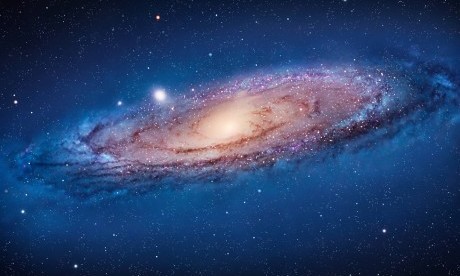Most things sound convincing when Morgan Freeman says them. The host of Through the Wormhole and the voice of God himself recently told told Craig Ferguson’s Late Late Show that the Higgs Boson “explains everything – creation.” “Oh oh”, replies Ferguson, “that’s not going to be popular.”
The “science puts God out of a job” trope has been championed by a number of scientists in recent times. “We have discovered,” says Lawrence Krauss, “that all signs suggest a universe that could and plausibly did arise from a deeper nothing. In this sense … science makes it possible not to believe in God.”
Krauss is in Sydney to debate the question “Why is there something rather than nothing?” – the traditional starting point for an ancient argument for the existence of God. Kraus, of course, is a cosmologist, known in the field for his work on the cosmological constant and dark matter, and to the wider public for books such as The Physics of Star Trek and A Universe from Nothing. Krauss’s opponent is the Christian philosopher William Lane Craig. He has built a career around the philosophical defence of theism, and is best known outside academia for his many public debates with atheists.
I am, like Krauss, a professional cosmologist and astrophysicist. I’ve also interacted with a philosopher or two, and I’ve read a lot of Craig’s work. So I thought it might be opportune to offer a guide to the uninitiated.
Science versus God
There is a temptation among the opponents of God to defend the following argument: “Science, science, science, science, science, science. Therefore the universe is all there is.” The assumption is that science will automatically push God out of reality.
What is science? Here’s what I try to do in my day job. Physics uses a rather peculiar approach to studying the universe. We can translate physical (measured) facts about the universe into mathematical facts about a “model” of the universe. Mountains of data are neatly summarised in a few equations. Having made the leap into mathematical space, we look for mathematical facts corresponding to measurements we haven’t made yet – in other words, predictions. We can then, for example, build a 27 km long, multi-billion dollar machine under France to smash protons together at ludicrous speeds to see if we were right about a type of particle predicted on paper in 1964. This actually works. Continue reading
Sources
Additional readingNews category: Features.




